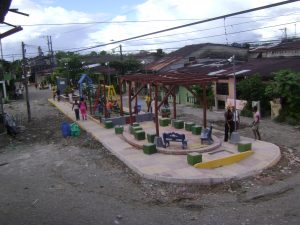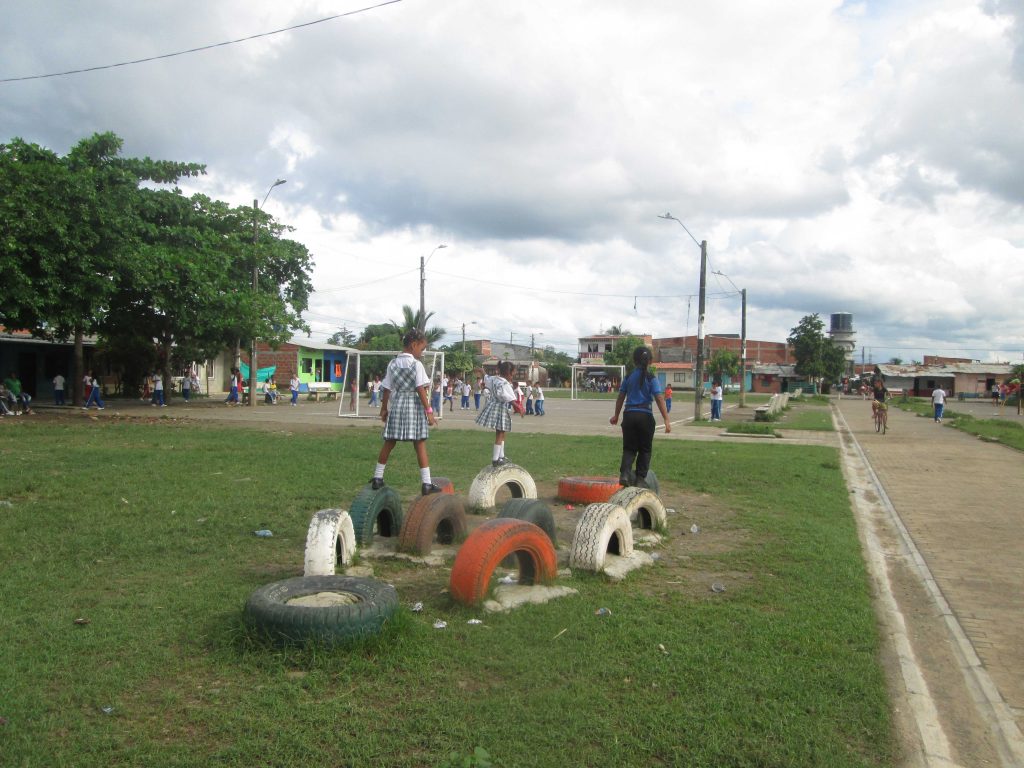This is the next in a series of posts by recipients of the Career Services Summer Funding Grant. We’ve asked funding recipients to reflect on their summer experiences and talk about the industries in which they’ve been spending their summer. You can read the entire series here.
This entry is by Jessica Laurel Arias, PennDesign ’17

This summer I conducted analysis of completed participatory design projects with the organization Fundación para el Desarollo Intercultural. The projects I studied involved communities in the city of Quibdó and the municipalities of Apartadó and Chigorodó in western Colombia to build local parks as a way of promoting social integration among community residents and individuals who had recently demobilized from armed groups. The projects took place in regions that have been torn apart by internal war in Colombia. Mass displacement and resettlement, corruption, lack of institutional capacity, and a culture of violence and distrust have resulted in a social fabric that is in many cases absolutely broken. I gathered first-hand information by travelling to those areas to conduct interviews with project participants and to observe continued use and results since the completion of the projects in 2009 and 2010.

The common goal of constructing a park produced more than just a physical product; it also gave these communities a first glance into the concept of the public realm: where people learn to tolerate differences, work towards the common good, and participate in civil society. The demobilized individuals described the impact of seeing a positive physical product to their labor, showing them they could be productive members of society. Many of the participants spoke to me about these projects as catalysts for greater empowerment in their neighborhoods. The different communities have since taken initiative to complete their own census to petition their municipality for greater resources, establish a school of music, complete home and infrastructure improvement projects, and involve neighbors in waste management programs. In spite of high poverty and very little institutional support, collective action and accountability have become great resources for these communities.

For me as a design student, the most interesting aspect of these projects was that although design was not the primary goal, it was an essential tool for promoting reconciliation between groups with a history of violent interaction. While designing and constructing their small community parks, the participants discussed the meaning of social harmony, citizen participation, and cultural identity. By practicing these concepts through the design process, victims and victimizers came together to find common ground.

Through the comparative analysis I completed of these projects, and hearing about other types of projects aimed at reintegrating demobilized persons in Colombia, it became clear to me that the physical-spatial aspect of the programs was fundamental to their sustainability. The parks have become spaces for interaction among strangers and acquaintances alike, places to develop and propagate social norms, and foster a shared vision for their communities. Residents of other neighborhoods recognize these spaces as symbols of the social cohesion achieved through the projects, and the parks serve as important meeting points in the areas where they are located. The continued use of these public spaces has also helped to continually build psychological and emotional ties to the physical spaces of these communities. It is inspiring to see how design can promote more equitable societies by involving diverse stakeholders and promoting citizen participation. By becoming the creators and managers of their own shared spaces, these communities are finding access routes to wider goals: economic development, social justice, and sustainable development.


